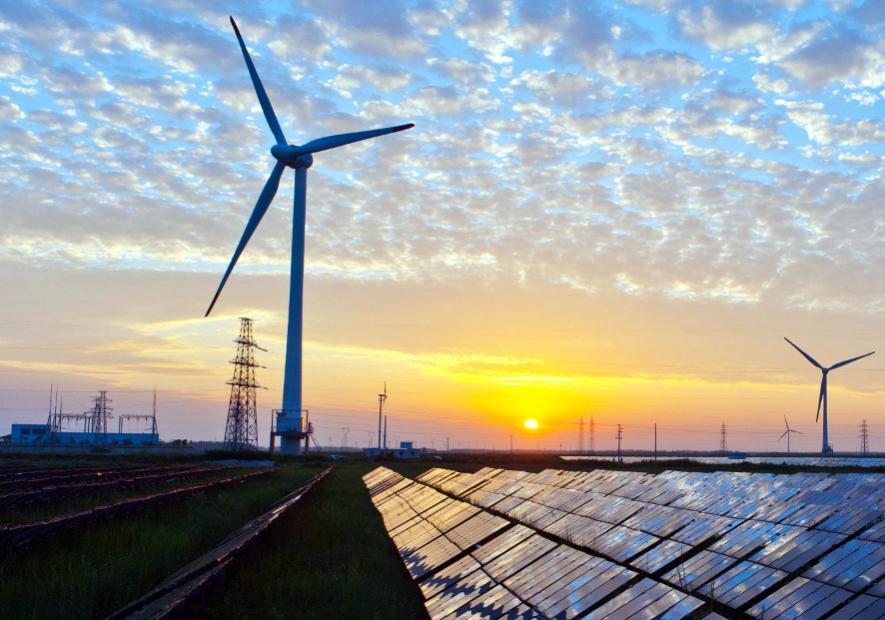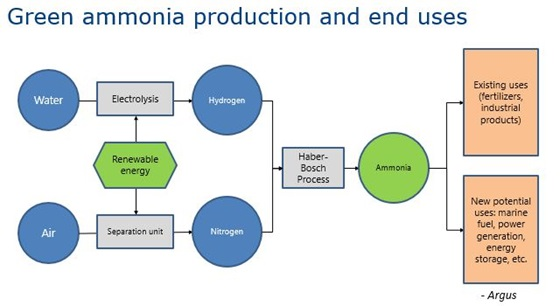India’s Green Energy Plan Signals Profit for Capital, Hot Air for People

Representational Image. Image Courtesy: Wikimedia Commons
The Union government’s recent announcement of a National Green Hydrogen Mission on which it will spend nearly Rs 20,000 crore prompts two questions. What is green hydrogen, and do we have a plan for a green hydrogen path for which exactly Rs 19,794 crore is being set aside?
Let us get one fact straight: all shades of hydrogen—green, blue or grey—only differ on how hydrogen is produced. These are not references to the colour of the gas! Regardless of how hydrogen is generated, it remains the same colourless, odourless gas. If hydrogen is produced using fossil fuel, e.g., natural gas, which inevitably produces some carbon dioxide, we call it “grey” hydrogen. If the carbon dioxide emitted while producing grey hydrogen can be captured instead of released, we call the same grey hydrogen “blue”. And hydrogen produced without using coal or natural gas—by passing electricity through water—is termed “green”.
If a process releases carbon dioxide into the atmosphere and produces hydrogen, it can hardly help in our fight against greenhouse gas emissions. The blue hydrogen promise is a strategy of oil and natural gas companies to keep using natural gas with a hazy carbon capture promise in some distant future. Currently, only 1% of the hydrogen we produce is blue. The rest is grey, with carbon emissions equal to, if not higher than when natural gas is directly burnt. We could keep using natural gas to generate power to produce electricity if carbon capture was a commercially viable method to reduce carbon emissions. Unfortunately, it is not. Blue hydrogen is simply a marketing exercise by oil and gas companies that extends how long they can profit from selling natural gas—just like the rebranding of natural gas as a “transitional” fuel.
So we must return to address the two questions crucial to a future hydrogen economy: how will hydrogen be used, and what will it cost?
Those who have read my columns know that the problem with using electric vehicles is the low energy density of the battery. The energy stored per kilogram of battery is low compared to burning one kilogram of diesel, petrol or compressed natural gas (CNG). A litre of petrol stores about 32 times a one-kg battery. That is why electric cars can go 100 or 150 kilometres before recharging. Worse, they are completely unsuited for heavy-duty trucks and, therefore, commercial transport.
Yes, hydrogen as a fuel is much more important for trucks and buses. Trucks that run on hydrogen can travel longer distances—up to 1,000 km—as it is typically stored under high pressure. Internal combustion engines, very similar to those that run on CNG, can use hydrogen. Fuel cells convert hydrogen to electricity, so motors in electric vehicles can directly use the electricity produced by these fuel cells. In either case, the hydrogen burnt by internal combustion engines or hydrogen-using fuel cells, the only by-product is environmentally benign water.
One critical use of hydrogen is the industrial production of ammonia for fertilisers through the century-old Haber process. This process uses nitrogen in the atmosphere and naphtha or natural gas as feedstock to produce ammonia, and involves carbon emissions. So, if instead of Liquefied Natural Gas (LNG), we use hydrogen to produce ammonia, no carbon emissions are released. That is why we call this ammonia, which uses hydrogen directly, “green”.

Since India imports LNG at a hefty cost—about $12 billion in 2021-22—and a significant part of it is for feedstock in fertiliser plants, switching to hydrogen can reduce our import bill. However, the price difference between green ammonia and ammonia produced using naphtha or LNG is still significant. That is why India needs to invest in research and development that can lower the production cost of “green” ammonia.
So the key question for a hydrogen instead of fossil fuel economy is how much it will cost. And here is the bad news. It currently costs $3-5 to produce one kilogram of hydrogen, which must drop to about a dollar per kilogram to become competitive. The good news is that as renewable costs drop sharply, we will likely see a surplus of renewables on the grid. But can we marry green hydrogen with renewables? Will it help meet our ambitious greenhouse emission target for 2030 and net-zero carbon emissions by 2060?
This is the genesis of the National Green Hydrogen Mission that the Prime Minister has launched with fanfare. And typical of all the Bharatiya Janata Party government’s “plans”, it has a financial commitment of Rs 20,000 crore—apart from grand statements about green hydrogen, green ammonia and their transformative future role. What there is very little of is discussion on how India will develop the technology cycle to produce green hydrogen or green ammonia. There is no national plan in sight for these.
The government’s press release makes clear that even a relatively small end-to-end green hydrogen plan will involve much larger outlays than Rs 20,000 crore. Let us briefly examine what such a plan means. First, the government has assumed, based on the falling costs of renewables, that surplus renewable energy is available. The problem is how we will use it. Indian big capital has already invested heavily in renewables, but what can they do with the surplus, considering State utilities are in no position to buy? An obvious answer is to convert the surplus renewable energy to “green” hydrogen or “green” ammonia. Such conversion will help those who have invested heavily in renewables and reduce India’s costly oil and LNG imports.
But how can we develop a green hydrogen economy that not only produces but uses such hydrogen? The simple answer is that the entire world is looking for an answer to this question. India is climbing the green hydrogen bus relatively late. And it has earmarked a paltry Rs 400 crore, that too in a private-public partnership mode, to develop the core technologies of this path!
Where will the rest of the money go? A bulk—Rs 17,490 crore under the Strategic Interventions for Green Hydrogen Transition (SIGHT) programme—goes to private capital. This is the “incentive”, read subsidy, for green hydrogen production. Rs 13,000 crore will go to produce green hydrogen, and Rs 4,490 crore to manufacture electrolysers. Similarly, for green ammonia, Rs 1,466 crore is earmarked to set up pilot plants to manufacture ammonia and fertilisers.
In other words, only a paltry Rs 400 crore for critical necessities such as developing fuel cell technology, re-engineering the Haber process to use hydrogen as feedstock, creating efficient electrolysers, new battery technologies for storing energy, and more.
Here is what differentiates post-independence India from neo-liberal India. There is no need for planning, the socialist curse, in these times. Just release the animal spirits of capital. This strategy tells us why India is among the largest markets for mobile phones but has a very small market share manufacturing handsets, telecom switches or other basic infrastructure equipment. We also have one of the largest electricity grids, but we have handed over the production of boilers, turbines and solar cells to others, including Chinese and South Korean companies.
India’s Ambanis, Adanis, Tatas and Birlas are more comfortable restricting themselves to building telecom networks, not manufacturing equipment for them. They set up power plants and refineries but do not create the industrial base to produce the equipment—boilers, turbines, pumps, compressors, heat exchangers—which constitute these plants. Likewise, we are setting up solar power plants with imported solar cells, if not solar panels.
The belief Prime Minister Narendra Modi’s government shares with the previous Manmohan-Congress government is that all the Indian government must do is ask Indian and foreign capital what concessions they need. The money, land, and labour laws (or the lack of them) they are given will magically develop the technology that will make us self-reliant. The same principle underpins the Rs 20,000 crore National Green Energy Mission. It will help capital in India become even bigger but at the cost of continuous dependence. In an increasingly fragile world order replete with sanctions and trade restrictions, this is a dangerous path for a continental-size economy like ours.
Get the latest reports & analysis with people's perspective on Protests, movements & deep analytical videos, discussions of the current affairs in your Telegram app. Subscribe to NewsClick's Telegram channel & get Real-Time updates on stories, as they get published on our website.






















